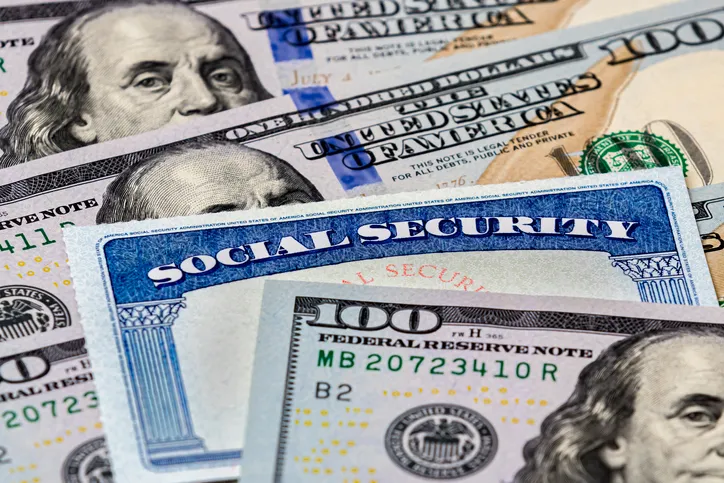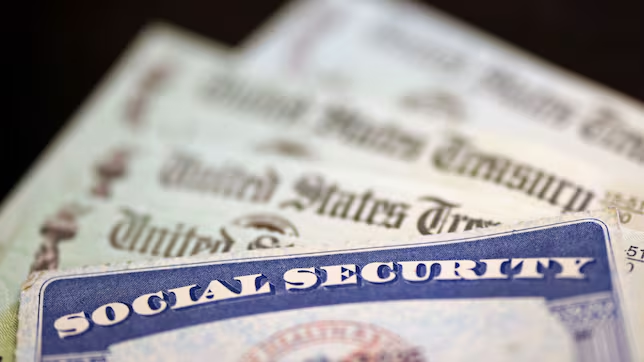For millions of Americans relying on Social Security benefits, understanding the payment schedule is essential to managing finances. In April 2025, the Social Security Administration (SSA) will issue payments on different dates depending on the type of benefits received and the recipient’s birth date. However, some individuals may be eligible to receive both Supplemental Security Income (SSI) and Social Security benefits in the first week of April. Here’s how you can determine if you qualify and when you can expect your payments.
April 2025 Social Security Payment Schedule
The SSA follows a structured schedule for issuing payments, ensuring timely disbursements. Below is the official payment calendar for April 2025:
- April 1: Supplemental Security Income (SSI) recipients
- April 3: Social Security beneficiaries who began receiving benefits before May 1997, as well as individuals receiving both SSI and Social Security benefits
- April 9: Social Security beneficiaries whose birth dates fall between the 1st and 10th of any month
- April 16: Social Security beneficiaries whose birth dates fall between the 11th and 20th
- April 23: Social Security beneficiaries whose birth dates fall between the 21st and 31st
If you receive only SSI or only Social Security based on your birth date, your payment will likely not arrive in the first week of April. However, those who qualify for both SSI and Social Security benefits under specific conditions can receive both payments in the first week.
How to Receive Both Payments in the First Week of April?

If you want to receive both payments in the first week of April, you must meet the following criteria:
1. Eligibility for SSI (Payment on April 1)
Supplemental Security Income (SSI) is a needs-based program designed to assist individuals with limited income and resources. To qualify for SSI, you must:
- Be aged 65 or older, blind, or disabled
- Have limited income and financial resources
- Be a U.S. citizen or an eligible noncitizen
SSI recipients will receive their payments on April 1, 2025. For more details on SSI eligibility, visit the Social Security Administration’s SSI page.
2. Receiving Social Security Before May 1997 or Getting Both SSI and Social Security (Payment on April 3)
Social Security benefits are issued on a staggered schedule based on birth dates, but there are exceptions. Individuals who:
- Started receiving Social Security benefits before May 1997, or
- Receive both Social Security and SSI benefits
will receive their Social Security payments on April 3, 2025.
This means that eligible individuals will receive their SSI payment on April 1 and Social Security payment on April 3, both within the first week of April.
To check your Social Security benefit eligibility or payment status, log in to my Social Security, an official portal provided by the SSA.
Factors That Can Affect Your Payment Date
While the SSA follows a structured payment schedule, a few factors may influence the exact timing of your deposit:
- Direct Deposit vs. Paper Checks: If you are enrolled in direct deposit, your payment will be transferred electronically on the designated date. Paper checks may take additional days to arrive by mail.
- Federal Holidays & Weekends: If your payment date falls on a weekend or federal holiday, the SSA typically issues payments on the preceding business day.
- Bank Processing Times: Some banks process deposits more quickly than others, which could result in variations in when funds become available.
How to Ensure a Smooth Payment Process?
To avoid delays or issues with your Social Security payments, follow these steps:
- Enroll in Direct Deposit: Direct deposit ensures timely receipt of benefits and reduces the risk of lost or delayed paper checks. You can sign up for direct deposit through my Social Security or by calling the SSA.
- Update Personal Information: If you have changed your address, banking details, or marital status, update your information promptly through the SSA website or by visiting a local office.
- Monitor Your Account: Regularly check your bank account or my Social Security to confirm deposits and report discrepancies if needed.
- Beware of Scams: The SSA will never call, text, or email asking for your personal information or payment. If you receive suspicious messages, report them to the Office of the Inspector General.
What to Do If You Haven’t Received Your Payment

If your expected Social Security or SSI payment does not arrive on time, take the following steps:
- Wait 3 Business Days: Sometimes, minor banking delays occur. Payments may take extra time, especially if you receive a paper check.
- Check Your Account: Log in to my Social Security to confirm your payment status.
- Contact Your Bank: If you use direct deposit, your bank may provide insight into any processing delays.
- Call the SSA: If the payment is still missing after three business days, contact the SSA at 1-800-772-1213 or visit your local Social Security office.
Final Thoughts
Receiving both Social Security and SSI payments in the first week of April is possible for those who qualify under specific conditions. If you receive both Social Security and SSI or started receiving Social Security benefits before May 1997, you are set to receive two payments on April 1 and April 3. By understanding the SSA’s payment schedule, keeping your personal information up to date, and enrolling in direct deposit, you can ensure a smooth and timely payment process.
For further details on Social Security benefits and payment schedules, visit the official SSA website.

Vikas is a seasoned finance writer with a keen eye for unraveling complex global financial systems. From government benefits to energy rebates and recruitment trends, he empowers readers with actionable insights and clarity. When he’s not crafting impactful articles, you can find him sharing her expertise on Social Media. You can connect with him via email at [email protected].









